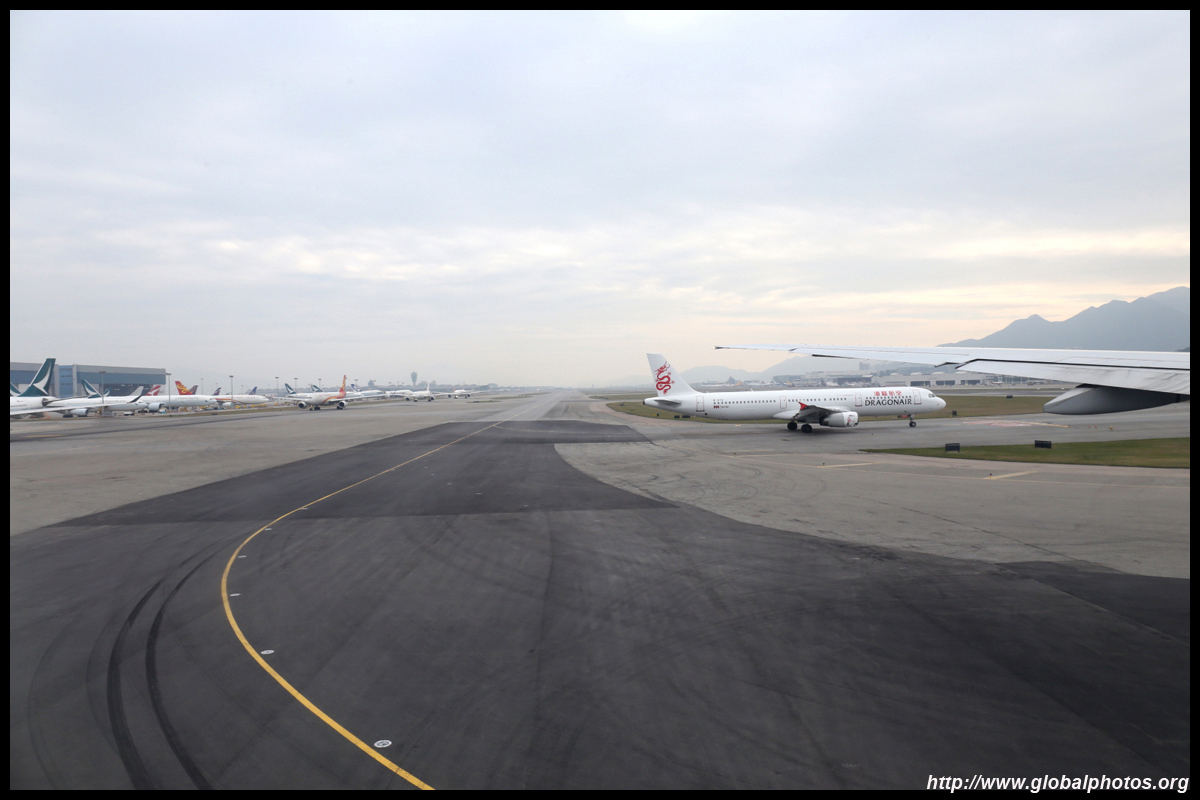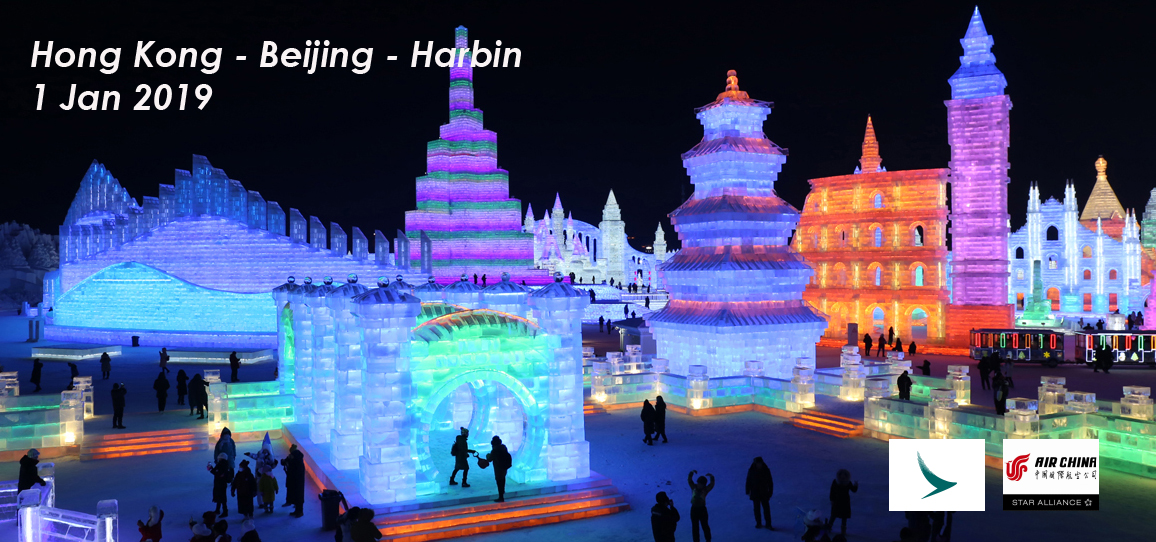
Harbin has been on my radar for a number of years because of its ice festival, where huge ice sculptures light up in various colours in a winter spectacle. There are 2 major winter festivals in this part of the world, with many in Hong Kong visiting the Sapporo one. I had set my sights on Harbin, although the direct (not nonstop) flight on a mainland carrier had stopped operating.
With rumours in the press that Hong Kong Airlines has been running into financial difficulty even though its parent, Hainan Airlines, has been in financial trouble for a while now, I wanted to go for a safer bet. China Eastern and its Shanghai Airlines offered the next cheapest option with reasonably short flights via Shanghai.
Then I realized I had a bunch of Asia Miles expiring, so I went for the best and most comfortable choice, flying Cathay Pacific to Beijing and then transferring to its sister carrier Air China for the domestic leg into Harbin. On the return, I would take the high-speed train back to Beijing with a stop in Changchun for more sightseeing. More on why I didn't fly later.
Unfortunately, any Air China redemption requires calling into the hotline, which is a hit or miss. Sometimes you get through with a lengthy wait, at other times they ask to leave a message. Calling first thing in the morning or during the seemingly quiet overnight hours didn't make a difference. I had pieced together all the legs by checking Cathay's availability on the Asia Miles website and Air China's availability on the Aeroplan engine. It was just a matter of giving the agent all the flight numbers and I was all set. The outbound would be a redemption on Asia Miles while the inbound would be a redemption on Avios.
The Asia Miles agent had trouble putting together the itinerary on the phone. After a bit of troubleshooting, he told me Air China cannot be bundled with Cathay for a single journey's redemption, and that this would be priced as 2 separate redemptions. Great. The total cost would be 20,000 Asia Miles, as opposed to 15,000 for a one-way. The only way to get around this is not to fly Air China and Shenzhen Airlines, which ironically is also a part of the Air China group.
So back to the drawing board, and I returned to Aeroplan's engine to check Shenzhen's availability. The direct from Shenzhen straight to Harbin was not available, but I could fly a connection on Cathay to either Guangzhou or Zhengzhou then connect to a Shenzhen domestic to Harbin. Both transits would be fairly lengthy and require getting up very early on Jan. 1 after a long night of festivities. Eventually, I capitulated and went for the more expensive Air China connection, and would train back to Beijing instead of paying another 10,000 Asia Miles for the domestic leg back to Beijing. The high-speed train would cost only about CNY 440 anyway.
20,000 Asia Miles later, I would fly out on Cathay at 9am with an almost 5 hour connection in Beijing before my domestic leg into Harbin in the late afternoon.
The Marco Polo counters in aisle B have 2 sections to drop your bags. This isn't particularly well-advertised, and I noticed one side had a long line while the other was empty. The agent couldn't push my bag all the way to Harbin, and asked that I take it out in Beijing to check again for the domestic leg. She was able to print me both boarding passes though.
Today's flight is operated by a 777 that has not been retrofitted with an extra seat yet. The IFE interface seems to have changed for the better. Being a lowly Green member, I was able to get on board way before the plebian chaos, and could still manage to snap a few cabin photos. The crew was good dealing with the seat lice, asking firmly to see all their boarding passes and getting the right people in the right seats. Seems this is only an issue that comes up regularly for PRC flights.
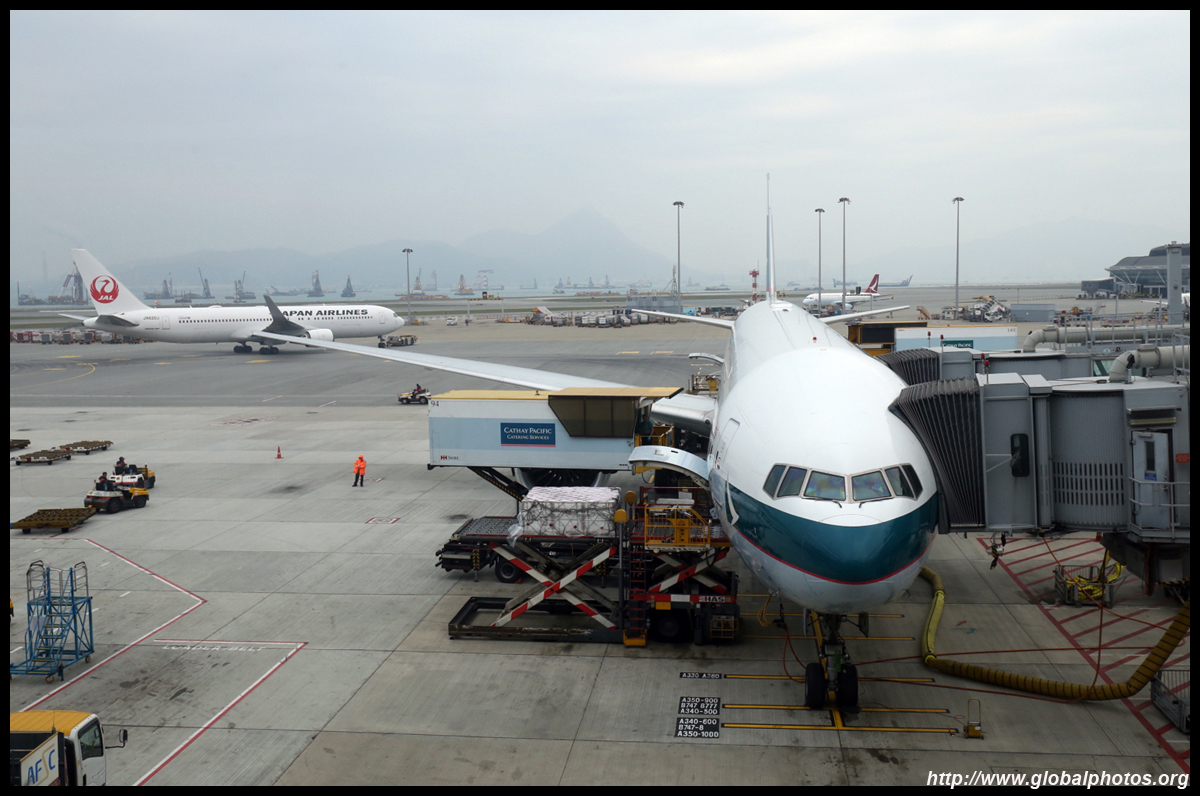
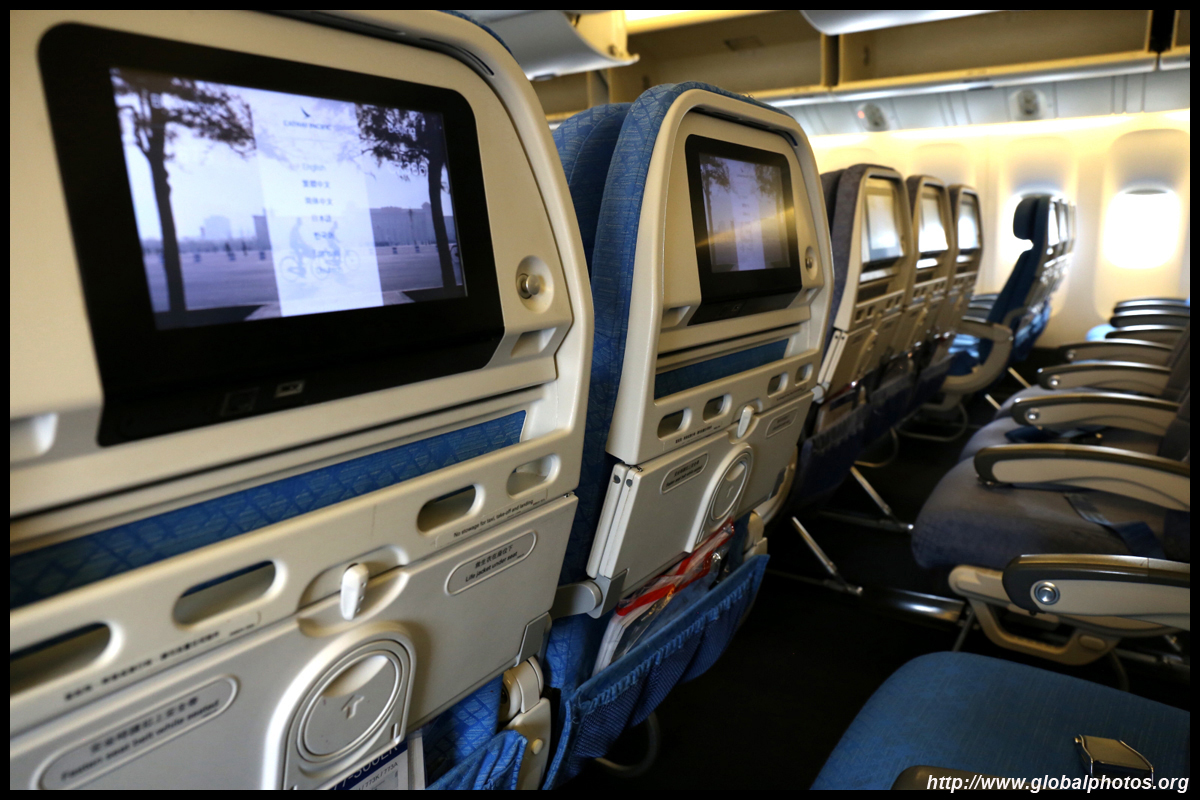
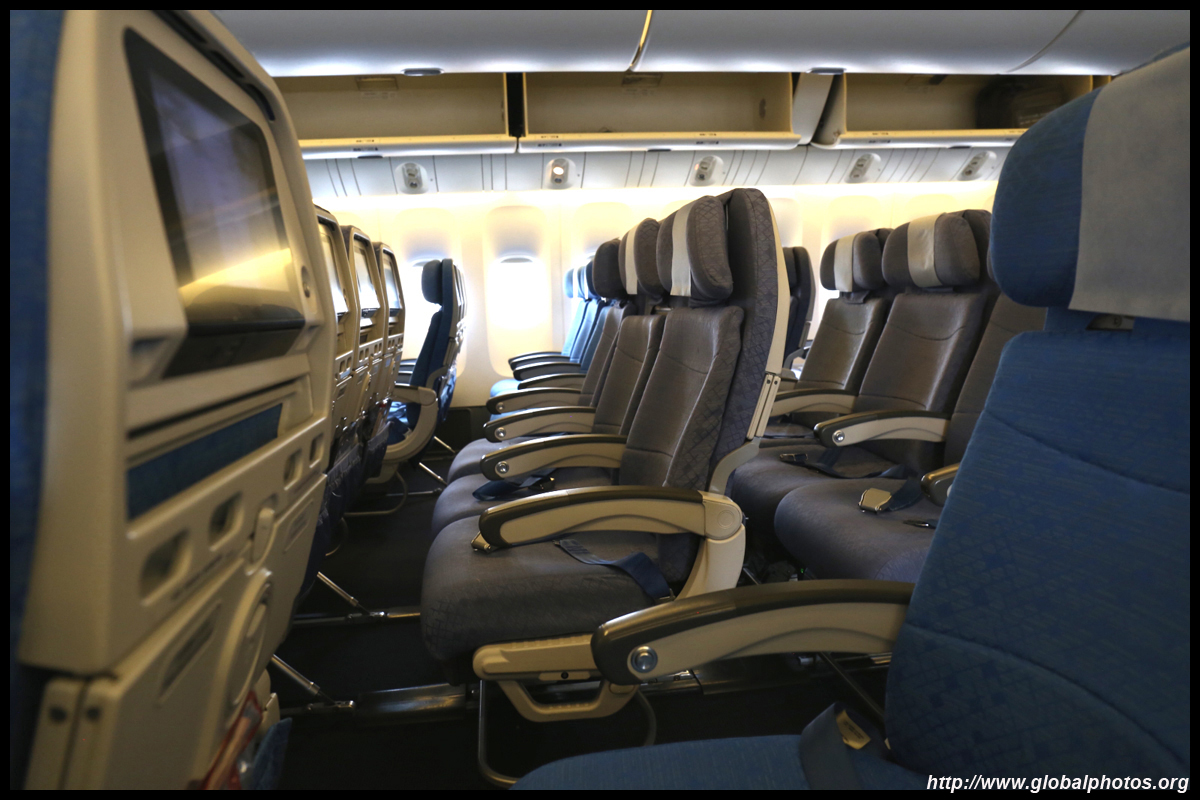
The flight time was announced at just under 2.5 hours. After pushing back on time, we made the typical long journey to the end of the island to take of towards the east. That took a good 20 minutes. By then, the blue sky started to poke out and I managed to get some decent aerials over the city.
